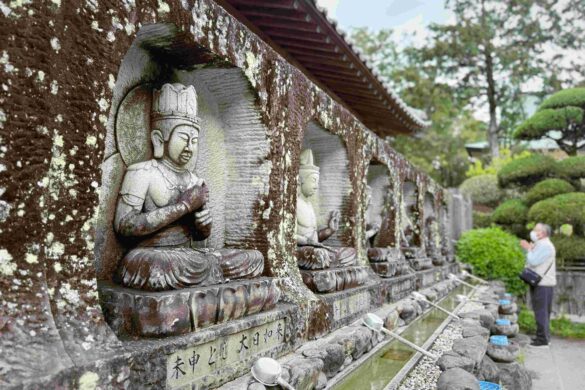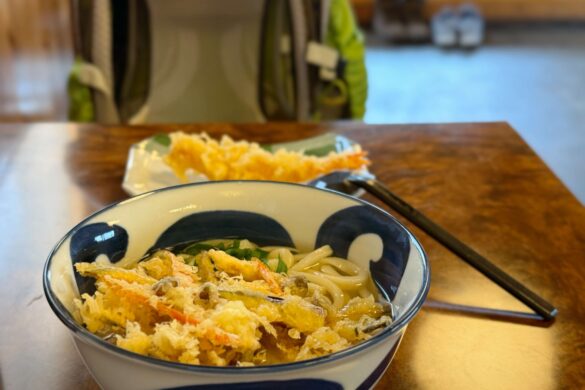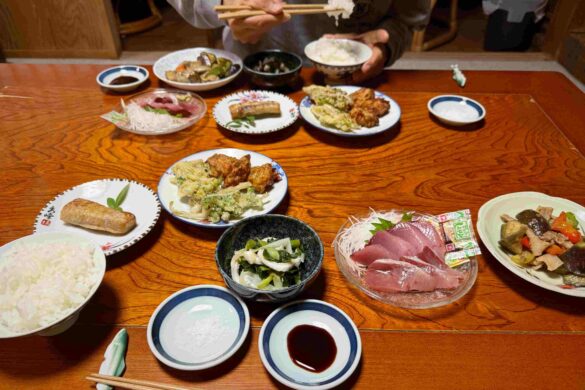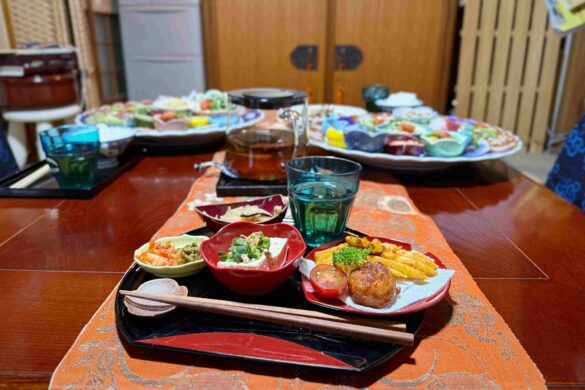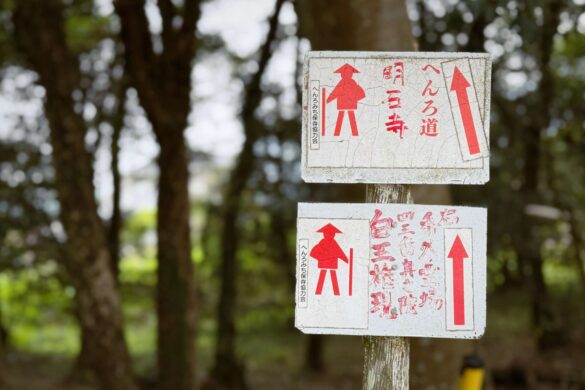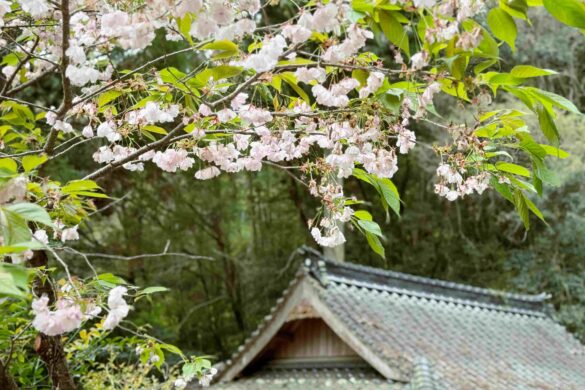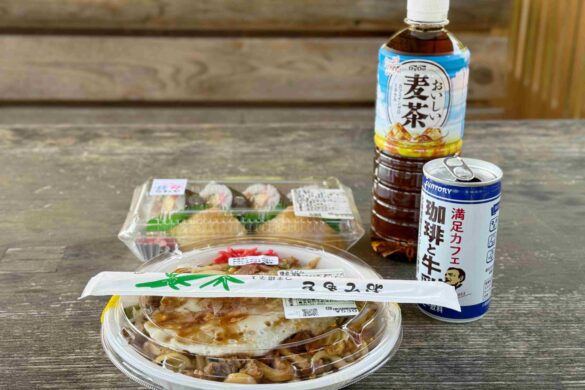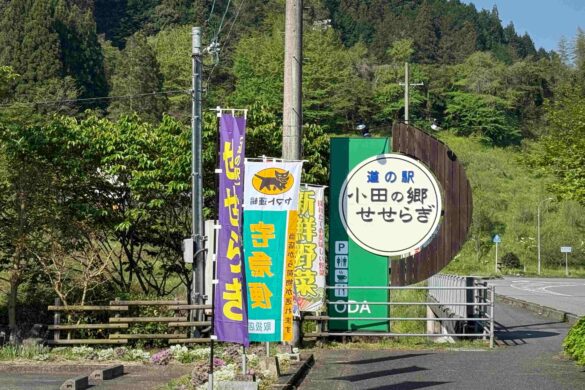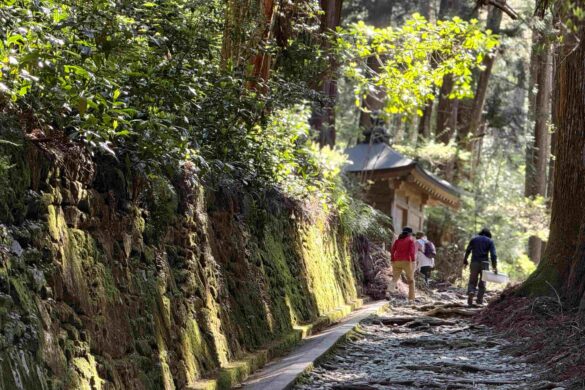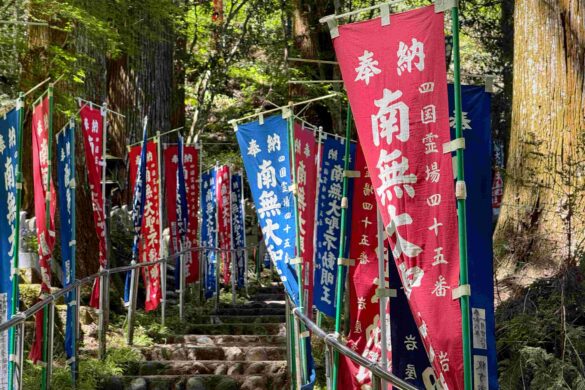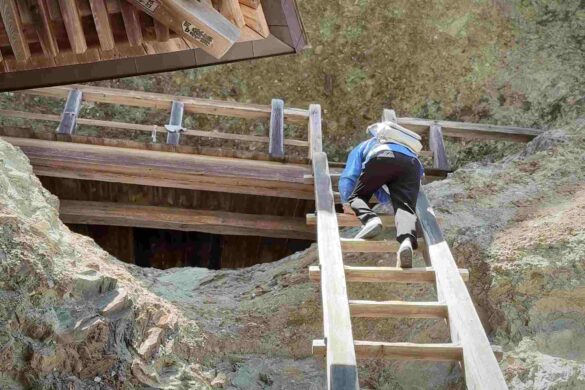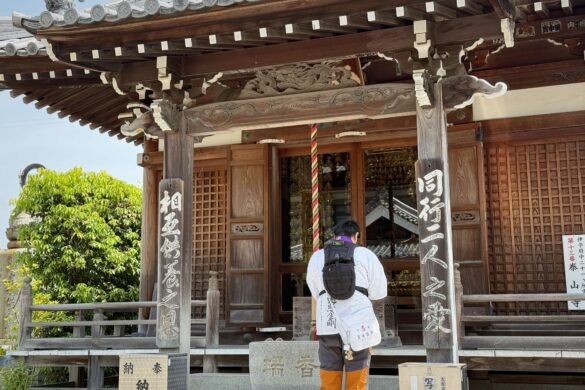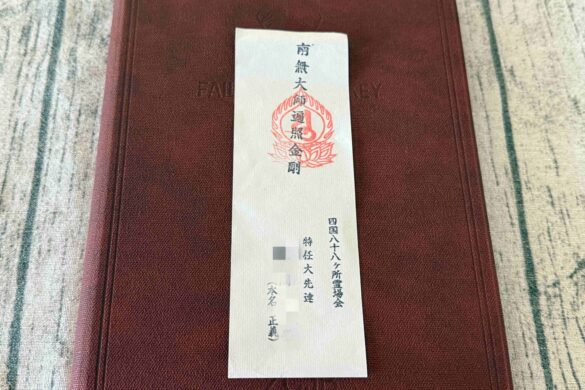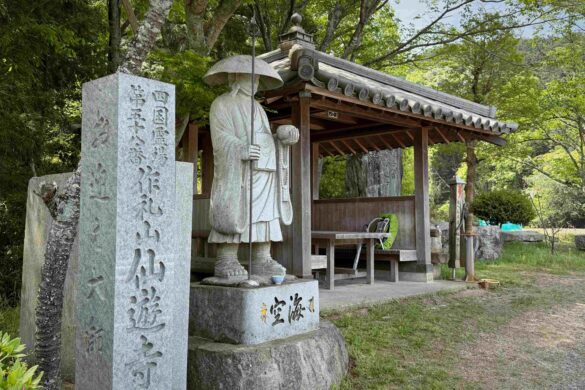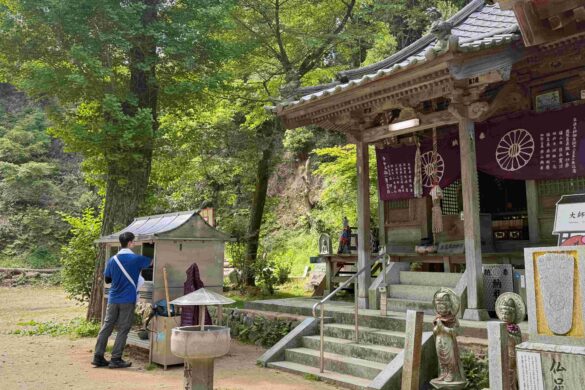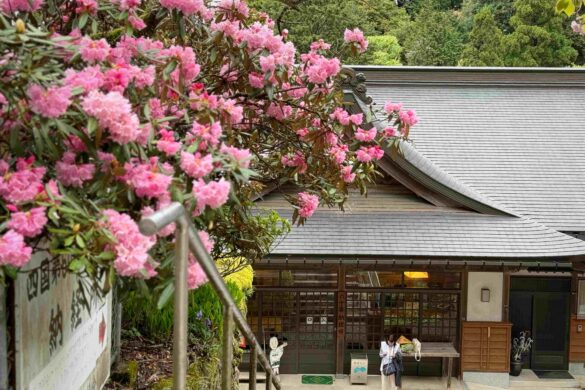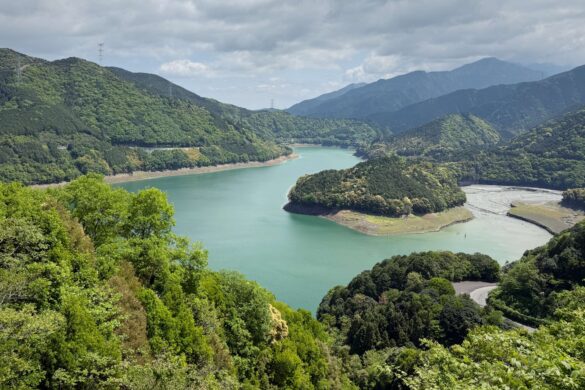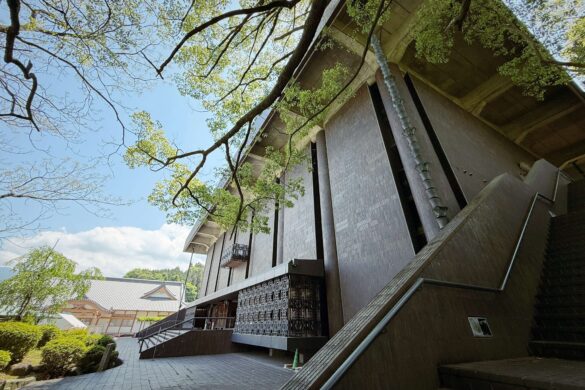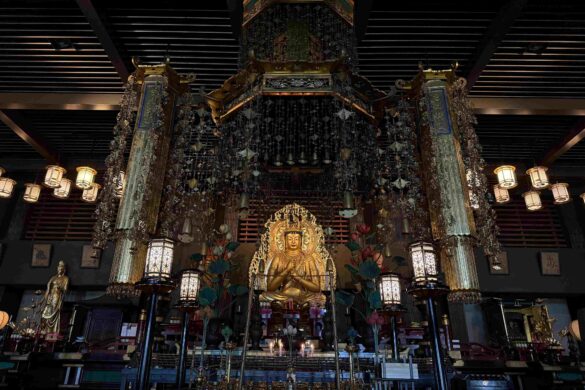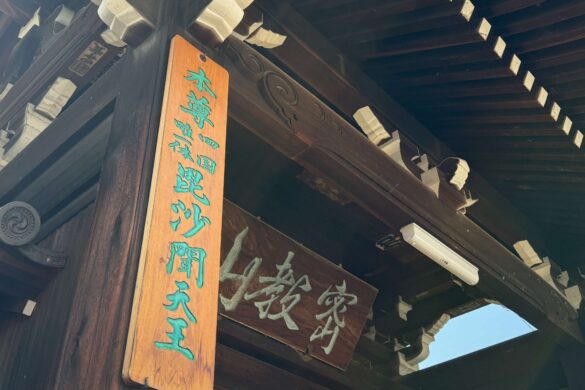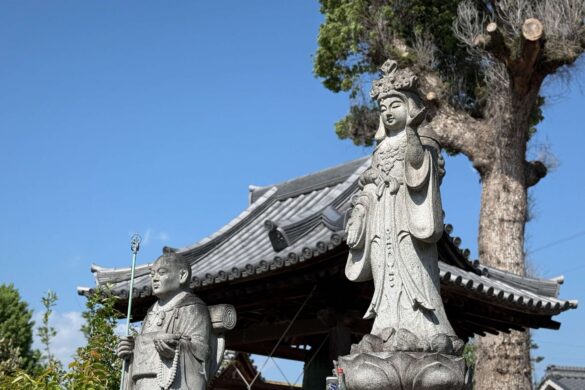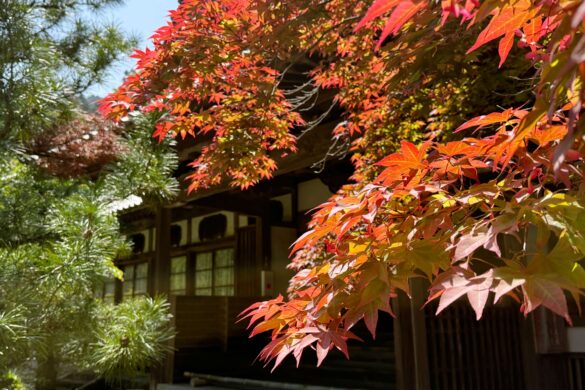After 23 days on the road, I’ve become somewhat numb to distances. I suddenly wondered—what does walking 20 to 30 kilometers a day actually mean? So I checked Google Maps:
That’s like walking from Taipei Main Station to Bade in Taoyuan, from Taichung Station to Caotun in Nantou, or from Zuoying HSR Station to Chimei Museum in Tainan. Thinking about it that way, I’ve gained a deep respect for people who walk around the entire island of Taiwan. The heat and humidity—especially under the blazing summer sun—must make it an absolutely grueling challenge!
Ehime, known as the "Dōjō of Bodhi" (the Place of Awakening), has been full of surprises. My stamina has noticeably improved, and every day feels rewarding in its own way. Though I’m still far from achieving true enlightenment or freeing myself from all worldly attachments, I’m definitely starting to gain a bit of confidence in myself—and that feels like progress.
Contents
。Day 24: It’s Such a Regret Not Being Able to Say Thank You in Person…
Temples visited: Kanjizai-ji (No. 40)
🚌: 23 km
🚶🏾♀️: 19 km
The beginning of the “Dōjō of Bodhi” moved me all over again. After visiting Kanjizai-ji, I stopped by a nearby udon shop called Udon Shiratsubaki for lunch. While waiting, I absentmindedly looked down at my phone. Suddenly, the shop owner gently tapped me on the shoulder, speaking quickly in Japanese while pointing outside. All I could catch was “udon… udon…” Sensing her urgency, I quickly opened a translation app:
“That customer already paid for your noodles.”
This time, I panicked. I rushed out the door, only to see a white work truck pulling out of the parking lot. I waved frantically but it was too late—the car was already gone. I was so frustrated with myself for not reacting faster. I didn’t even get the chance to say a proper thank you...
To the kind-hearted person from Ehime—thank you for cheering me on. This past month has been filled with such generous kindness. Every time I think about it, I feel so grateful to be on Shikoku. It reminds me that as long as I keep walking, good things will keep happening.
。Day 25: Why Are Cooked Green Vegetables So Rare in Japan?
Temples Visited: Ryūkō-ji (No. 41) to Butsumoku-ji (No. 42)
🚇: 46 km
🚶🏾♀️: 8 km
Since I’m about to head deep into the mountains to test my resolve, I decided to give myself a short break these past two days—traveling by bus and train. As fate would have it, I ran into a fellow pilgrim I hadn’t seen in ages—someone I started this journey with on Day 1! After catching up, I finally asked a question that’s been on my mind for a while:
“Why is it that, even though supermarkets sell a lot of leafy greens, you almost never see cooked vegetables at guesthouses or restaurants?”
He paused for a moment, perhaps never having thought about it before, then offered this first explanation:
“Maybe it’s just an unspoken cultural habit—cooked leafy greens are more of a home-cooked thing.”
Not quite satisfied with that, he later added a second theory:
“I think it’s about presentation. Dark green vegetables are hard to pair visually, and once cooked they look soft and dull. To make the plating more attractive, restaurants tend to use raw lettuce, squash, or fruit instead.”
It makes sense! Now that I think about it, I have had cooked vegetables two or three times, but they were always served in elegant little side dishes. This explanation definitely feels convincing—and quite insightful!
。Day 26: What Am I Still Not Tired Of?
Temples Visited: Meisekiji (No. 43)
🚶🏾♀️: 33 km
Meisekiji isn’t far from the city, yet it has an almost otherworldly serenity—like a hidden sanctuary. The aged wooden structures radiate timelessness, and maybe it was the unexpected reunion with cherry blossoms that added to the magic. It’s been ages since I last saw sakura on this journey, and suddenly, here they were again. It felt like a small miracle.
Along this long, long road, the question I ask myself most often isn’t:
“Why am I walking the Shikoku pilgrimage?” or “What wish am I hoping to fulfill?” (even though those are what most people ask me).
The question I keep coming back to is:
“Why am I still not tired of this?”
I’m someone who easily gets visually overstimulated and mentally stuck. Back in 2012, my first trip to Europe included six weeks in Germany, France, and Austria, packed with castles, churches, theaters, and museums. In under two weeks, I felt numb—surrounded by beauty, yet emotionally dry. I found myself daydreaming about fried chicken and bubble tea in the middle of a grand cathedral. The following year in Greece, I found more joy playing with stray cats than looking at temples. And in Egypt two years ago, aside from awe-inspiring moments at the Giza pyramids, Abu Simbel, and the Valley of the Kings, I started yawning in broad daylight, brain-fried from too many murals.
This time, it’s different. There are no “sights”—just temples. And yet, every one of them—with their familiar Niō gates, purification basins, bell towers, main halls, Daishi halls, and stamp stations—feels special. I find joy in a single blooming cherry blossom tree, or feel motivated to climb an extra set of stone steps just because Kūkai once left a story here. Maybe it’s the kindness I encounter along the way. Maybe it’s because I’m often on the receiving end of small, heartfelt gestures that make me feel truly grateful. But I think, in large part, it’s because each of these sacred places is reached only after hours of aching steps or long, uncertain waits for the next bus or train. Just like love—what you have to work hard to reach always feels the sweetest. And when it’s that sweet, how could I ever grow tired of it?
。Day 27: Don’t Zone Out at a Roadside Rest Stop
Temples Visited: 0
🚶🏾♀️: 19 km
Today's goal was simple: reach the town at the foot of the mountain to prepare for tomorrow’s early-morning climb. Now that I’m walking faster on flat terrain, I arrived in just over five hours—including short breaks. Not wanting to disturb the guesthouse by showing up too early, I took a seat at a shady gazebo at the Seseragi roadside rest stop. Not long after I sat down, a man came over and handed me a bottle of coffee milk. Then another man placed a bag of food in front of me—udon, sushi, and barley tea. That morning I’d already had a big breakfast. At lunch I ate an energy bar. And I had a full dinner awaiting me at my lodging. Panic set in. I quickly took off my white pilgrim vest and tried to hide my sugegasa hat behind my back, hoping desperately not to be recognized as a henro (pilgrim). In the end, I gratefully accepted the food and finished it all—despite repeatedly muttering to myself, “I thought I was full… Why is my body still eating like it’s starving?”
。Day 28: Finishing Just Before the Deadline was Such A Rush!
Temples Visited: Daihō-ji (No. 44) to Iwaya-ji (No. 45)
🚶🏾♀️: 34 km
The stretch from Temple 43 (Meiseki-ji) to Temple 44 (Daihō-ji) spans about 83 kilometers and includes multiple mountain crossings. It’s known as one of the toughest sections on the pilgrimage. I tackled it over three days. While the trails were manageable, climbing over 500 meters with a full pack still left me completely drained. When I finally reached Daihō-ji in the afternoon, sunlight was filtering softly through towering ancient trees past the Niō Gate—it moved me to tears. But there was no time to linger. It was already past 2 p.m., and I still had a 2+ hour trek ahead to reach Iwaya-ji.
At the base of the mountain, I realized I had another 20 minutes of steep climbing to reach the temple itself. With the temple office closing at 5 p.m., adrenaline kicked in. I gritted my teeth and powered up the trail, arriving—miraculously—at 4:58 p.m. to receive my stamp. As I sat down afterward, my legs buckled beneath me. I couldn’t believe I’d made it in time. I guess all the “assignments” the mountains and sea had thrown at me so far really paid off—my body somehow kept up with my will.
。Day 29: I gave in and used my “money superpower.”
Temples Visited: Jōruriji (No. 46) to Sairinji (No. 48)
🚕: 23 km
🚶🏾♀️: 21 km
So far, I’ve only ever woken up in the middle of the night twice on this journey: once on Day 4 before the tough climb to Shōsan-ji, poring over the route map the innkeeper had drawn. The second time was just last night, anxious about the heavy rain forecast for today. After all, I was headed through a remote mountain area, without buses or much foot traffic. Sure enough, I woke to drizzle, and as I descended the mountain, it turned into a downpour. After more than two hours of walking, I finally reached the city and asked a Lawson staff member to help me call a taxi.
Taxis in Japan are famously expensive. In Ehime, the meter starts at 580 yen, and once you pass 1.1 km, it ticks up by 80 yen at lightning speed. So, I shut my eyes, embraced the comfort brought by “cash power,” and reminded myself—this is why I work hard: so I can turn money into things I love.
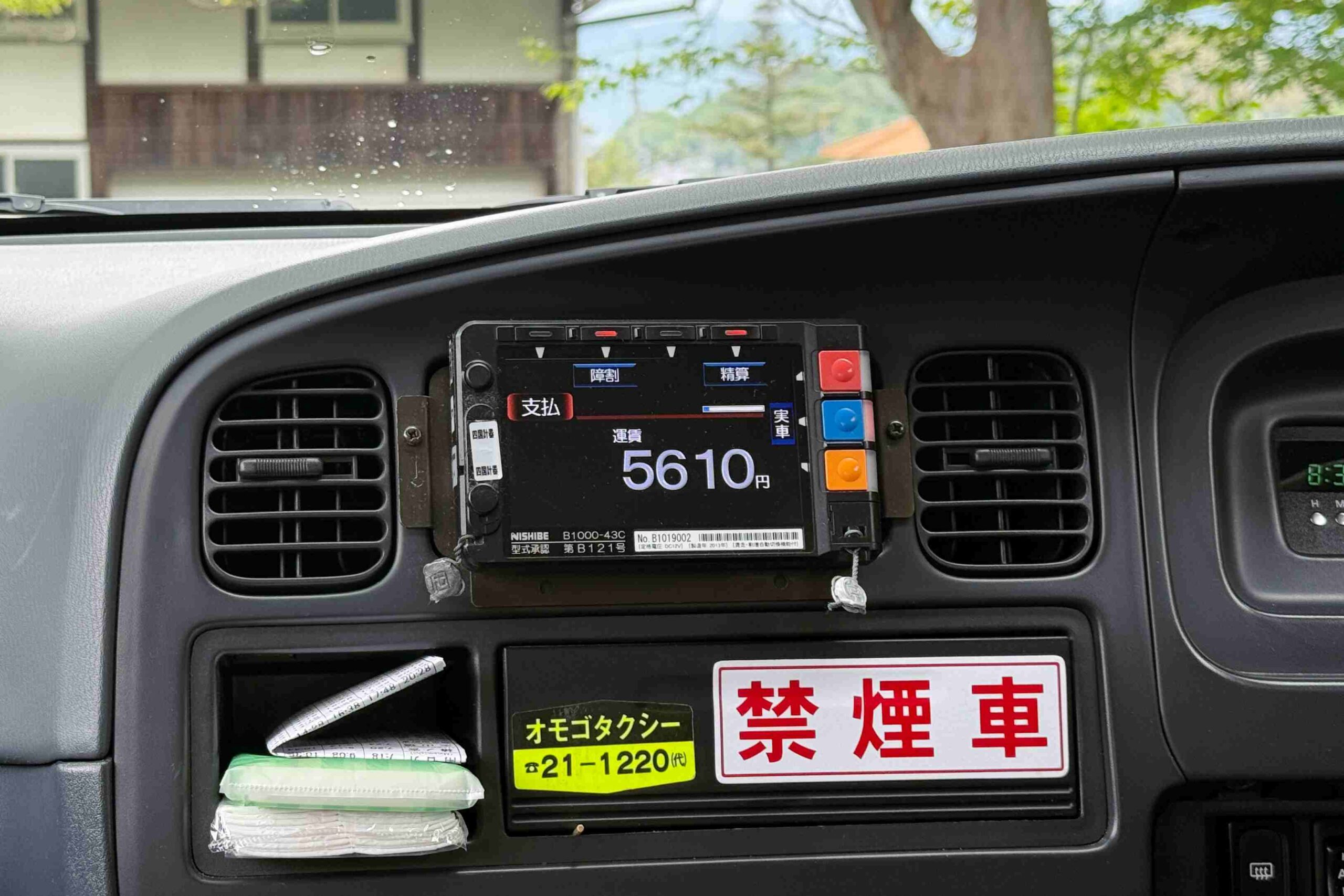
。Day 30: The Most Unique Osettai I’ve Ever Received!
Temples Visited: Jōdo-ji (No. 49) to Enmyō-ji (No. 53)
🚶🏾♀️: 24.6 km
I had heard stories of people receiving cash as osettai (acts of kindness or offerings to pilgrims), but when it happened to me, I couldn’t help but think, “Wait—really? Am I allowed to accept this?” Maybe Kūkai himself knew my wallet had torn yesterday when I took a taxi, and so he sent a kind soul to give me a little encouragement. On the way to my guesthouse, an elderly woman walking toward me suddenly said, “Osettai,” then opened her wallet, took out 250 yen, and handed it to me. I waved my hands and thanked her, trying to decline politely, but she extended her hand and said, “Nomimono” (a drink), clearly meaning she wanted to treat me to something refreshing. I’d heard it’s impolite to refuse an osettai, so I gratefully accepted her generosity.
Inside her wallet, she also had a photo of Shohei Ohtani. She took it out and started telling me all about it. The only part I really understood was her excited “Kawaii!” (so cute!). I immediately pointed at the photo and enthusiastically repeated, “Yes! Kawaii~~!” And then—she gave me her precious, kawaii Shohei Ohtani photo as a gift. It was the most unique osettai I’ve ever received!
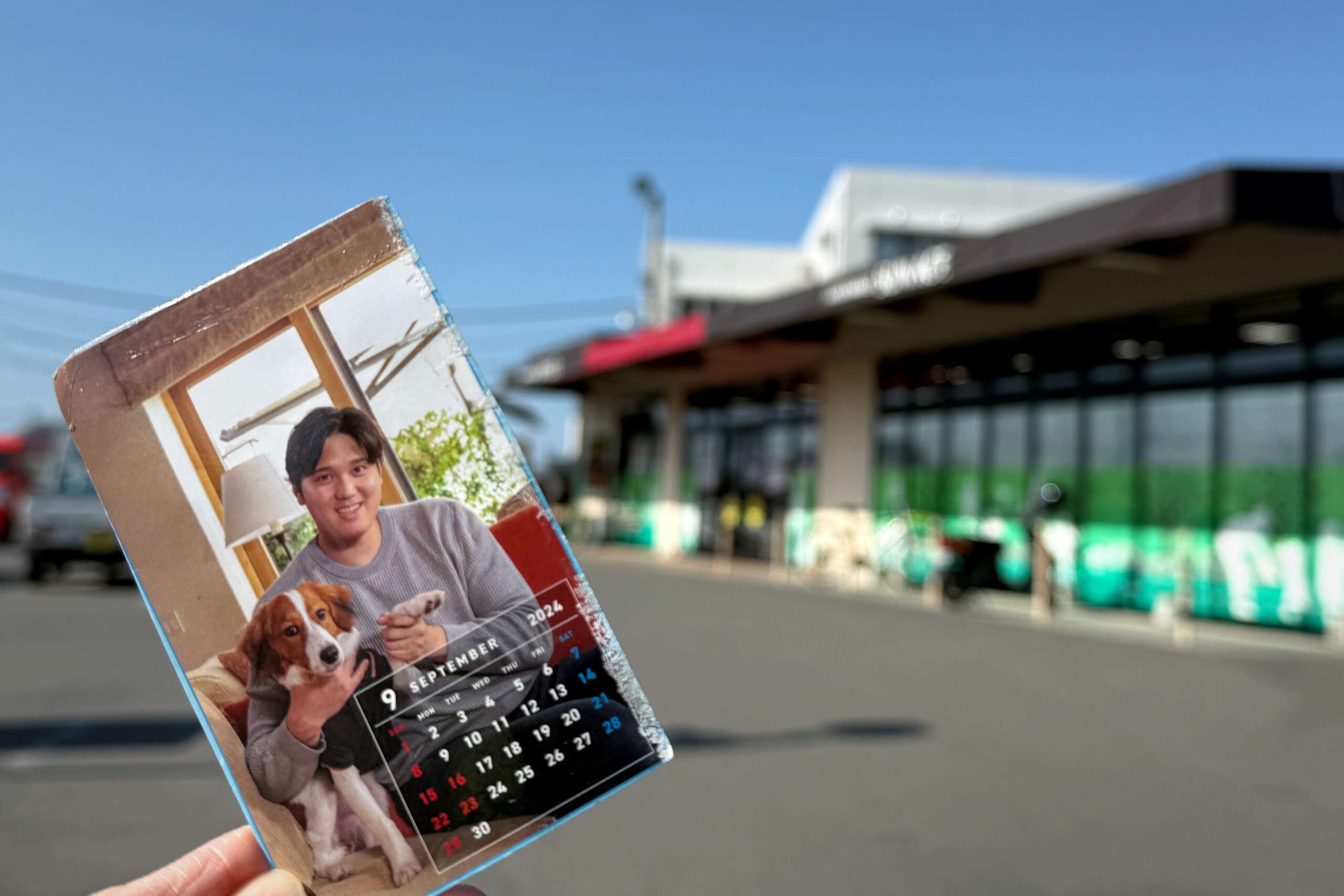
。Day 31: Encountering the Legendary Dai-Sentatsu!
Temples Visited: Enmei-ji (No. 54) to Taizan-ji (No. 56)
🚶🏾♀️: 18 km
Today, I had planned to rest for half a day and then take a stroll in Imabari, famous for its towels and recently on my mind because of a wildfire that burned for five days in March. But after eating way too much at lunch—so full I was practically out of breath—I just wanted to walk it off. Somehow, I ended up walking all the way to Taizanji, three kilometers away. Thankfully, I made the trip because I was lucky enough to meet the legendary Dai-Sentatsu! As soon as I arrived at Taizanji, I was drawn to a man holding an adorable dog. After fulfilling my wish to take a photo with the pup, the man handed me a nōryō—a pilgrim’s business card.
Wow—it was a special edition, shining silver and beautifully crafted, with “Tokunin Dai-Sentatsu” (Specially Appointed Great Sentatsu) printed on the back! A Sentatsu is a pilgrim officially recognized by the Shikoku 88 Temple Pilgrimage Association. They dedicate themselves to guiding others on the pilgrimage and must have extensive knowledge about the pilgrimage and the sacred sites. Once certified, Sentatsu receive exclusive pilgrimage tools: a special nōkyōchō (stamp book), rengasa (pilgrim’s robe), kongōzue (pilgrim’s staff), and a numbered name tag. The Sentatsu rank has five levels, each requiring a set number of years and pilgrimage completions, plus recommendations from temple priests. That means this highest-ranked Dai-Sentatsu has completed at least 14 full pilgrimages over more than 10 years and received endorsements from five temple chiefs. Wow! This person has truly devoted a large part of their life to the pilgrimage. RESPECT!
。Day 32: Give Me Five!
Temples Visited: Eifuku-ji (No. 57) to Kokubun-ji (No. 59)
🚶🏾♀️: 28.6 km
I was overjoyed to run into the older pilgrim I hadn’t seen in over two weeks—right at Sennyū-ji! We had crossed paths several times before at various temples and guesthouses. Even though we couldn’t communicate through language, we always encouraged each other with a high five. Today, when we reunited, he did something rare—he opened up a translation app and said:
“I’ve been thinking about you lately. I’m really happy to see you again!”
Honestly, I felt the same. Most of the time, we walk alone, eat alone. But in those solitary moments, we often find ourselves thinking about the kind people we’ve met along the way—those familiar faces who, through a few shared encounters, have become part of our journey. We quietly wish them a good day and a safe arrival at the next temple or guesthouse. This kind man is one of those people I think of often. After all, he’s the only one who ever reaches out his big hand for a Give Me Five!
。Day 33: Finally Reaching the 60s!
Temples Visited: Yokomine-ji (No. 60)
🚶🏾♀️: 34 km
Temple 60, Yokomine-ji, sits halfway up Mount Ishizuchi in western Japan at an altitude of 750 meters. It’s considered one of the five most difficult temples to reach and is the third highest among all Shikoku pilgrimage sites. At the age of 24, Kūkai practiced extreme asceticism on Mount Ishizuchi, going without food—a testament to the mountain’s status as a sacred site for spiritual training. Originally, I planned to take the traditional pilgrimage path, but after last night’s rain, I wasn’t keen on slipping over wet stones and fallen leaves. So today, I opted to hike from the Yokomine trailhead instead. It’s a bit longer, but the route is manageable—even a soft-legged newbie like me could make the round trip in under five hours. With Mount Ishizuchi rising to nearly 2,000 meters, it’s also one of Japan’s top stargazing spots. Next time I visit Ehime, I’ll come back as a proper tourist and enjoy the view!
。Day 34: Kōon-ji Could Host a Concert!
Temples Visited: Kōon-ji (No. 61) to Maegami-ji (No. 64)
🚶🏾♀️: 12 km
🚇: 48 km
Just when I was starting to feel a bit of “temple fatigue,” along came a surprise—Temple 61, Kōon-ji, looks nothing like any other temple I’ve visited! Originally founded in the 7th century by Prince Shōtoku, Kōon-ji was completely rebuilt in 1976 as a modern structure made of reinforced concrete. Its main hall can hold over 600 worshippers, and honestly, the atmosphere inside feels like it could host a Dainichi Nyorai concert!
Temple 63, Kisshō-ji, is another standout—it’s the only temple in all of Shikoku that enshrines Bishamonten, the guardian deity of wealth and warriors. The temple takes great pride in this distinction, with “Shikoku’s One and Only” engraved in many spots. Rarity breeds reverence, and the steady stream of visitors shows just how beloved this place is.
In the afternoon, I hopped on the Yosan Line train to get closer to the base of tomorrow’s mountain. That will mark the end of my journey through Ehime—Shikoku’s Bodai-dōjō, or “Place of Enlightenment,” furthest from the pilgrimage’s starting point. This region surprised me every day and, without a doubt, strengthened both my legs and my spirit. I may still be far from freeing myself from worldly attachments or reaching enlightenment, but I’ve definitely gained a bit of confidence in myself.
。Day 35: Is It Normal to See Red Maple Leaves in May?
Temples Visited: Sankaku-ji (No. 65)
🚶🏾♀️: 13.7 km
Perched at an altitude of 360 meters, Sankaku-ji marks the final temple of the Bodai-dōjō, the “Place of Enlightenment.” As I approached the Niō Gate, I was immediately drawn to the maple leaves—shifting from green to a vivid red... Wait—red maple leaves? At the edge of spring, isn’t that a little unusual? Maybe, just like the cherry blossoms that seemed confused by the erratic weather lately—blooming early, late, or not at all—the maples are feeling a bit lost too. It’s as if even the trees aren’t sure what season it is anymore.
This journey along the Shikoku Pilgrimage gave me the rare chance to spend long stretches of time alone with myself—bringing both reflection and inspiration. I sincerely hope more people can personally experience the depth and meaning of this sacred trail. If you're curious or planning to walk it yourself, I hope this article offers even a small bit of help. If you’re interested in the scenery along the route or what the temples look like, feel free to visit my YouTube channel. In the Shorts section, I’ve documented every temple—precious memories I’ll keep revisiting again and again.

